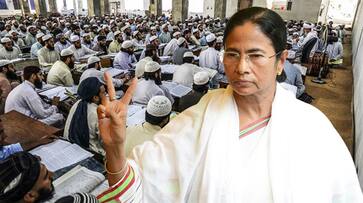
24-Jun-2024 , Updated on 8/19/2025 12:17:04 PM
Balancing Act: The Implications of West Bengal's Investment in Madrasas
The West Bengal government’s recent decision to allocate 5000 crore INR for the development and support of madrasas has stirred significant debate. This substantial financial commitment is intended to uplift the educational standards and infrastructure of these Islamic institutions. However, it also poses potential challenges for the broader socio-political fabric of India.
One of the most immediate concerns is the potential for exacerbating communal tensions. In a country as diverse and sensitive as India, where religious sentiments often run high, such a significant financial allocation exclusively for madrasas could be perceived as favoritism towards the Muslim community. This perception might fuel resentment among other religious and ethnic groups, leading to a sense of alienation and injustice. The resultant polarization could be exploited by political parties to further their agendas, deepening societal divisions and leading to unrest.
The allocation also raises questions about educational equity. While it is crucial to support minority institutions to ensure inclusive growth, the amount dedicated to madrasas might be seen as disproportionate when compared to the funding of other educational institutions, particularly those serving underprivileged communities across various religions. Critics argue that such a substantial investment should be balanced to support all educational sectors equitably, ensuring that no group feels neglected or unfairly treated.
Another significant concern is the quality of education imparted in madrasas. Traditionally focused on religious studies, many madrasas are in the process of integrating modern education to enhance the employability and social integration of their students. However, without stringent oversight and a clear curriculum that includes contemporary subjects like science, mathematics, and technology, there is a risk that the allocated funds might not effectively contribute to the holistic development of students. Ensuring that madrasas offer quality education that equips students with skills relevant to the modern workforce is essential for their integration into mainstream society.
The political ramifications of this decision cannot be overlooked. The allocation might lead to backlash from opposition parties, who could portray it as an appeasement tactic aimed at securing votes from the Muslim community. Such narratives could undermine the secular fabric of the nation, leading to intense political debates and potentially impacting governance.
In a similar vein, the history of West Bengal’s economic and industrial decisions offers a telling backdrop. Back in 2006, the West Bengal government was preparing to allocate 1000 acres of land in Singur for Tata’s Nano project. This move faced massive protests from local farmers, who argued that the land was far more fertile than the government claimed and could grow more than just one crop. Environmental activists, intellectuals, and current Chief Minister Mamata Banerjee supported the farmers. The protests eventually turned violent, leading Tata to shift its plant from Bengal to Gujarat. This episode not only marked the end of a 1500-crore investment in Bengal but also highlighted the state’s recurring struggle between industrial growth and agricultural preservation.
The economic decline of Bengal can be traced back to the partition in 1947, which disrupted the region's established economy. Post-independence, Bengal struggled with industrial and capital crises, exacerbated by policies and political shifts. The rise of the Left Party and subsequent land reforms aimed at benefiting farmers often led to conflicts with industrial interests. The anti-industrial mindset and frequent strikes caused many companies to relocate, halting private investment and crippling Bengal's industrial growth.
Even though the Bengal government introduced a new industrial policy in 1994 to attract big industries and reduce taxes, the old and weak infrastructure hindered significant progress. The land acquisition process, muddled by earlier land reforms, created additional challenges. This historical context underscores the complexities faced by Bengal in balancing industrial and agricultural interests, a challenge that continues to this day.
The decision to allocate 5000 crore INR for madrasas must be viewed within this broader historical and socio-political context. For the initiative to succeed without creating broader societal issues, it is imperative to ensure transparency, balanced resource allocation, and a focus on integrating modern education standards within madrasas. Only then can such a substantial investment foster true inclusivity and development, contributing positively to India’s diverse and dynamic society.
To read more:
1: Hindus not safe in Hindustan's West Bengal!
2: Why Mamta Banerjee is making west bengal a muslim hub
3: Democracy through Ballots or Bullets?

Student
I am a content writter !
Comments
Join Our Newsletter
Subscribe to our newsletter to receive emails about new views posts, releases and updates.
Copyright 2010 - 2025 MindStick Software Pvt. Ltd. All Rights Reserved Privacy Policy | Terms & Conditions | Cookie Policy